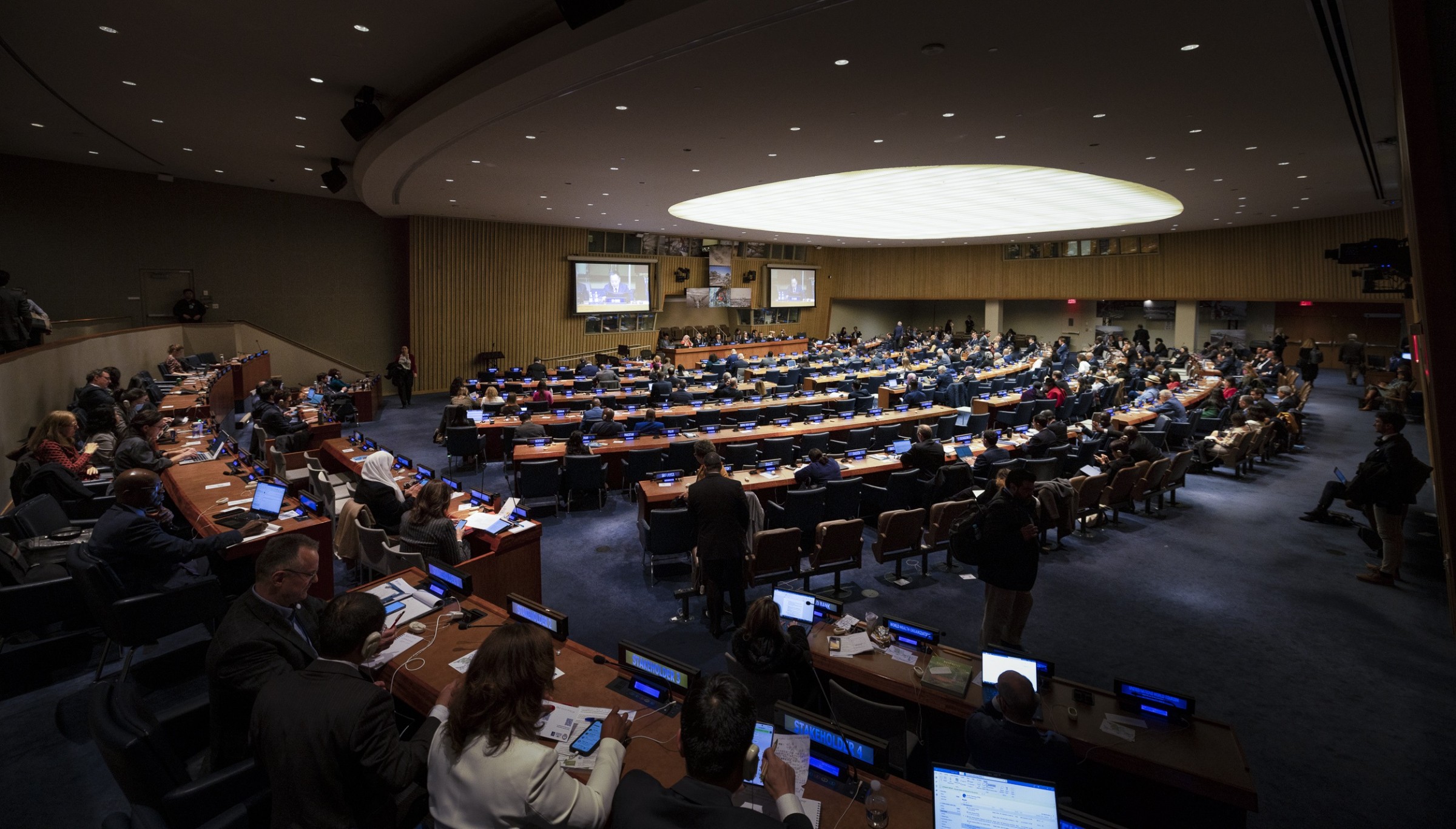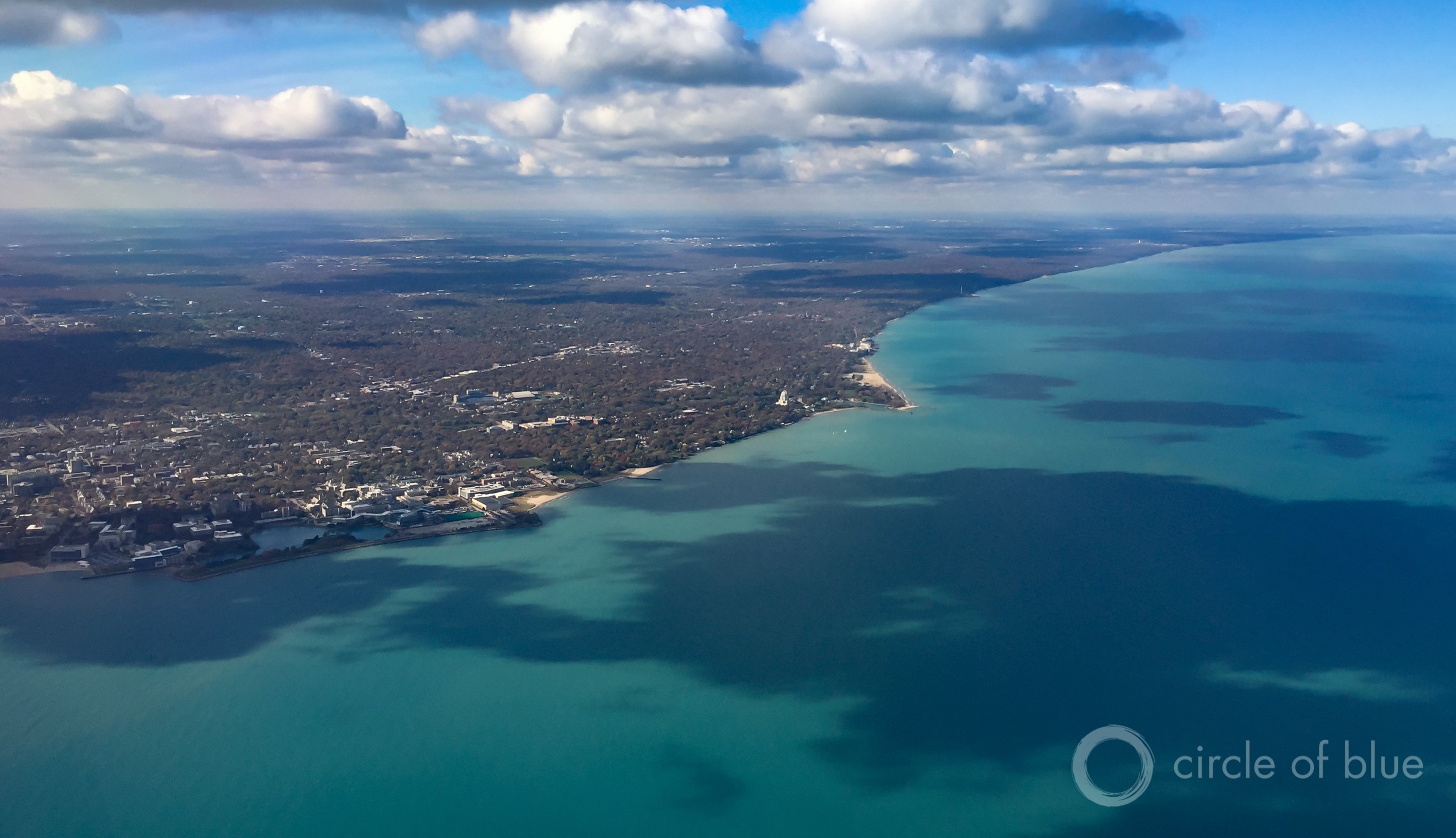UN Water Conference highlights risks and opportunities for the Great Lakes region.

The UN Water Conference was held March 22-24, 2023, in New York City. Photo © J. Carl Ganter/Circle of Blue
By Brett Walton, Circle of Blue – March 28, 2023
For three days last week the world came together at the United Nations in New York City to discuss ways to place water at the center of decision-making.
The UN Water Conference, the first such event in 46 years, was billed as a marquee attraction, a chance to corral public and political attention and train it on the global challenges of too much water, too little water, and water that is too polluted.
Public officials, business leaders, and scientists from the Great Lakes region attended the conference, linking global debates about freshwater supply and management with local experience. Their involvement had two aims. First, they highlighted the work being done to protect the Great Lakes. Shared by Canada, the United States, and tribal nations, the lakes demand international cooperation. The conference coincided with an announcement from Prime Minister Justin Trudeau that Canada would spend $420 million Canadian (US$306 million) over the next decade on Great Lakes protection. Second, they gleaned lessons from other participants that could be transplanted back home.
Main themes emerged, according to interviews with several attendees. Freshwater biodiversity is often overlooked. Indigenous groups ought to have a stronger voice in water management decisions. Local governments are essential for adapting to the extremes of a warming planet. Dotting the landscape with natural features that protect against floods and droughts and trap carbon — “nature-based solutions” — is an important companion to the pipes and pumps of legacy infrastructure. And the challenges today are a business opportunity for the Great Lakes.
Rob Sisson, a commissioner with the International Joint Commission, the bi-national body that oversees waters shared by Canada and the United States, was struck by different perceptions of the value of water. Many attendees came from countries where running water in the home and functioning waste disposal are not the norm. Sisson worried that the relative water abundance in the Great Lakes could lead to public complacency, even when the region is being buffeted by rising temperatures, severe storms, and pollutants like PFAS and microplastics.
“The conference underscored the need for a decadal science plan to get ahead of the next curveball and to make sure no one takes the Great Lakes for granted,” Sisson said.
The catalyst for the conference was a set of global targets for healthier people and ecosystems. This year is the midpoint for these Sustainable Development Goals, or SDGs. Though there are targets for ecosystem management, a primary objective is safely managed water and sanitation for all.
Amid the push for clean drinking water, Matt McCandless is concerned that freshwater biodiversity could fall through the cracks. McCandless is associate vice president at the International Institute for Sustainable Development, a research organization. Freshwater habitats are among the planet’s most imperiled ecosystems, he said. No other ecosystem has lost as large a share of species in the last half century.
Karen Murchie, director of freshwater research for Shedd Aquarium, in Chicago, also felt that freshwater biodiversity was lacking, both at the conference and in the SDGs.
“The freshwater biodiversity in our rivers and our lakes and our wetlands is providing a critical ecosystem service for us,” said Murchie, who researches fish migration in the Great Lakes. The population of suckers, a small fish that is food for larger fish, might be declining in some tributary creeks. Freshwater mussels, at high risk in rivers globally, filter water and anchor the stream bed, preventing erosion. “That’s a pretty big deal.”
The region knows what dead water looks like and how to think about fixing it. Degradation of Lake Erie after World War Two catalyzed research that informs water management decisions worldwide, McCandless said. The greater Great Lakes region is now a beacon globally for lake science.
The Experimental Lakes Area, a landmark natural laboratory in northwestern Ontario for freshwater research, was established in 1966 on traditional lands of the Anishinaabe and Métis nations. ELA is now managed by IISD. Using living lakes as research subjects, scientists conducted groundbreaking assessments at the ELA of key lake pollutants like mercury, phosphorus, and nitrogen to develop the science that would inform policy to save the Great Lakes.
McCandless said that decades of rigorous analysis at the site and a generally convivial relationship between Canada and the United States “set the template for how other great lakes could be managed and studied.”

The Great Lakes, including Lake Michigan, shown here, are one of the world’s largest surface freshwater systems. Photo © J. Carl Ganter / Circle of Blue
Demonstrating those links was the goal of a session that IISD organized at the UN Water Conference. The session on Africa’s great lakes brought together freshwater scientists from two continents to demonstrate how scientific advancements in understanding lakes Erie, Huron, and Superior could be applied to similar challenges half a world away, in transboundary lakes like Victoria, Tanganyika, and Malawi.
“Because freshwater ecosystems are the most threatened ecosystems on the planet, we need to make sure that they don’t get lost behind water and sanitation issues,” McCandless said. “It’s the freshwater ecosystems that are responsible for providing the water for basic sanitation and health.”
Though the challenges are many, some see opportunity — a business opportunity — in the crisis.
Dean Amhaus is the president and CEO of The Water Council, a Milwaukee-based hub for water technology and innovation. Amhaus attended the conference to make the business case for the Great Lakes — for the water-monitoring technologies developed by companies like Wisconsin-based Badger Meter; for the area as a potential landing ground for water-intensive businesses; and for the expertise of the region’s technical experts, who can assess a company’s water risks.
“A lot of folks are saying that they know they need to do something, they just don’t know what to do and how to get started,” Amhaus said. “And we’ve got the answers to be able to help them.”
Brett writes about agriculture, energy, infrastructure, and the politics and economics of water in the United States. He also writes the Federal Water Tap, Circle of Blue’s weekly digest of U.S. government water news. He is the winner of two Society of Environmental Journalists reporting awards, one of the top honors in American environmental journalism: first place for explanatory reporting for a series on septic system pollution in the United States(2016) and third place for beat reporting in a small market (2014). He received the Sierra Club’s Distinguished Service Award in 2018. Brett lives in Seattle, where he hikes the mountains and bakes pies. Contact Brett Walton




